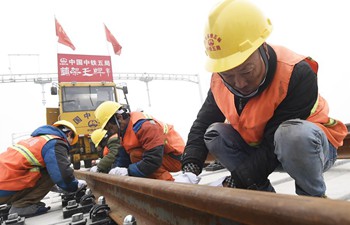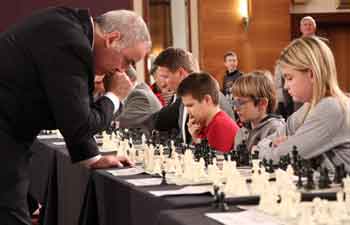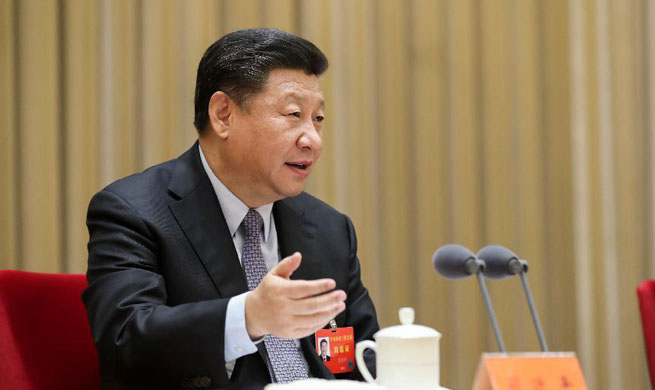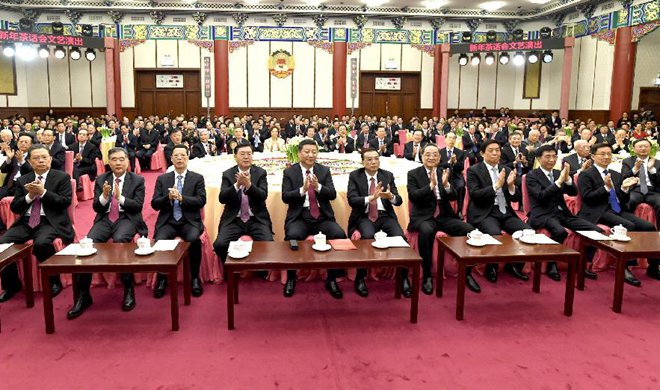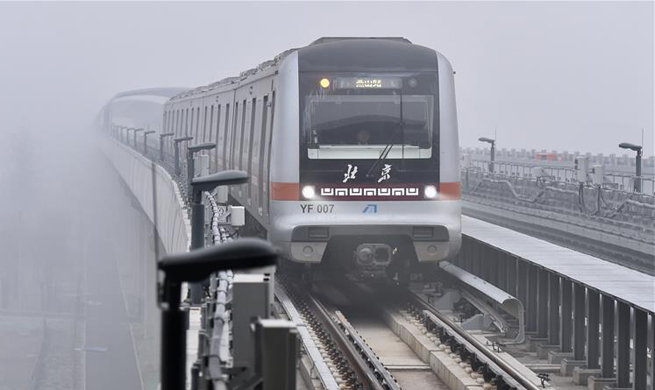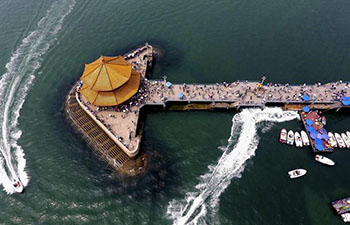MANILA, Dec. 30 (Xinhua) -- Two months after recapturing the southern Philippine city of Marawi from the Islamic State-linked militants, so-called "Maute group", Philippine troops continue to clear the city of explosives and other munitions left behind by the extremists.
It will take a few more months to fully remove the large number of unexploded ordnance and explosive booby traps planted by the pro-IS extremists during the five-month fierce street-to-street fighting, authorities said on Saturday.
Troops fully liberated Marawi in October after a five-month intense fighting that ruined the city, killed more than 1,200 people and displaced thousands of others, mostly poor farmers.
The displaced residents will only be allowed to return after the mopping up operation and rebuilding of the war-ravaged city are completed.
Major General Arnold Rafael Depakakibo, chief engineer of the Armed Forces of the Philippines (AFP), said troops have so far cleared 30 percent of Marawi's most affected areas from unexploded ordnance and improvised explosives.
As of Dec. 15, he said, a total of 2,853 assorted unexploded ordnance and 415 improvised explosive devices were recovered by the troops.
"This was done through the support of Explosives and Ordnance Disposal Company and K-9 Teams from the Philippine Army and Philippines Air Force," Depakakibo said in a statement.
He said the Joint Engineer Task Group (JETG) has also completed the clearing of the city's more or less 20 km primary and secondary roads, three major bridges, a school, and three places of worship immediately after the liberation of Marawi, the capital of Lanao del Sur province on the island of Mindanao.
"We also continue our limited construction support to government agencies involved in supporting the maintenance of evacuation centers," Depakakibo said.
Aside from construction support, he said the JETG also assisted the Housing and Urban Development Coordinating Council in the construction of 500 temporary shelters for the displaced.
Depakakibo said 250 of the 500 units have already been awarded last week while the other 250 will be awarded next month.
Aside from manpower, he said the military is using its construction vehicles and equipment to clear-off rubbles and debris as well as in the demolition of buildings in the city.
Two months after the Marawi conflict ended, the International Committee of the Red Cross said that thousands of its displaced residents remain in government makeshift centers, dependent on aid.
Indeed, authorities said it will will take years to completely rebuild the war-ravaged Marawi. But Philippine President Rodrigo Duterte wants the reconstruction and rehabilitation process to be finished before his single six-year term ends in 2022.
Already, Duterte ordered the extension of martial law in the entire Mindanao until December 2018 to keep the region safe while the rebuilding process is underway.
Although the Philippines has ended the Marawi conflict, Duterte said the threat from self-proclaimed IS-linked groups has not receded. In fact, he said that extremist groups continue to recruit and sow terror in the southern Philippines.
The Marawi attack highlighted the desperation of Islamist militants to establish an IS cell in Southeast Asia, and the southern Philippines, home to radical Islamist groups like the Abu Sayyaf Group and decades-old Muslim secessionist groups, is an ideal hideout for Southeast Asian IS fighters that have travelled to Syria and Iraq and then returned to Southeast Asia.
Philippine authorities said Indonesian and Malaysian fighters helped the local Islamist fighters plot the May 23 Marawi siege.




